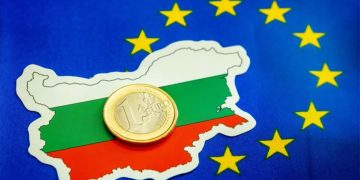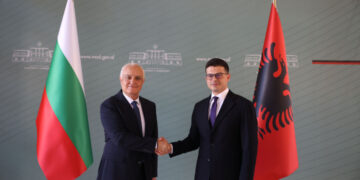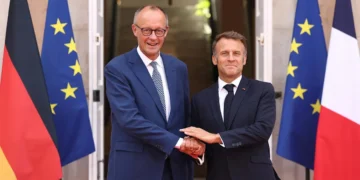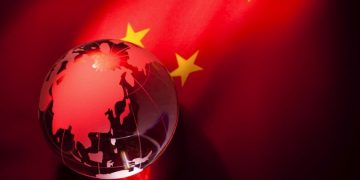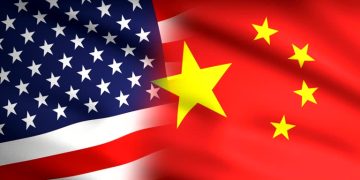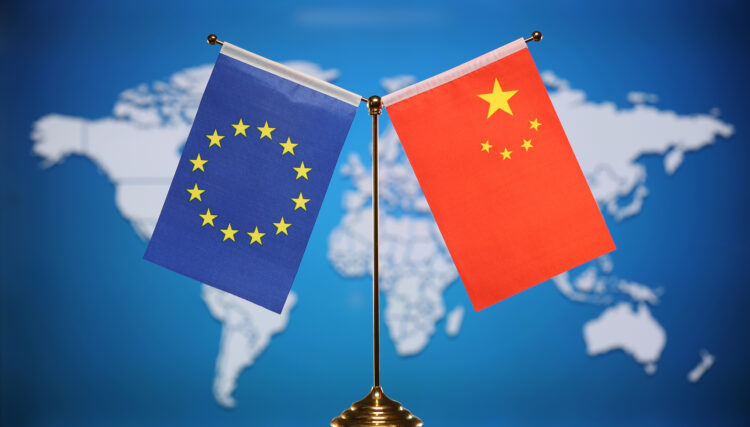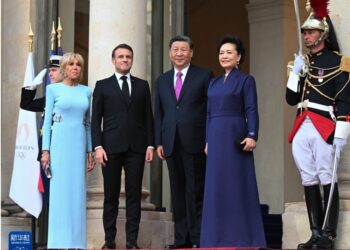By Etleva Xhajanka
Chinese President Xi Jinping will pay state visits to Paris, Belgrade and Budapest this week in an effort to boost trade relations with the European continent.
President Xi’s European tour comes at a time when China is paying high attention to the partnership with the European side and intends to deepen its cooperation in Europe, including the Balkan countries in the economic, environmental protection, peace, etc.
But on the other hand, European countries are trying to balance the Chinese influence with the desire for further investments.
According to Eurostat, China was the third largest destination for EU goods exports and is the largest source of imports in Europe, accounting 22% of the total.
Beyond being a leading economic and trade power, China was increasingly asserting itself, inevitably, as a global financial power.

China’s global outward foreign direct investment (FDI) has grown significantly over the past decade, with Europe as a key destination. The rise in Chinese outward FDI indicates a rebalancing of global political-economic relations, with China and its companies taking on new roles and gaining economic power, unitig research on the set up of Chinese multinationals companies and their activities in Europe, focusing on the business strategies of Chinese investors and employment relations in Chinese-owned companies in Europe.
Chinese investment in Europe is shifting from mergers and acquisitions to green projects mainly in the automotive industry. Greenfield investment accounted for 57% of total foreign direct investment from China in Europe in 2022, surpassing mergers and acquisitions for the first time since 2008, according to official statistics.
In this context, the agenda of Chinese leader Xi’s discussions with European counterparts, in the conditions of current developments, takes into account the future of relations between the EU and China, as well as their prospects for cooperation on the global stage.
Saying that, France is the second European destination, after Italy, for Chinese investments, while in Serbia, Chinese investments lead in the steel industry. China has financed projects worth about 6 billion dollars in Serbia during 2017, which is equal to European investments in the entire Western Balkans. Also, the Chinese plans for the construction of high-speed railways in Hungary, as a win-win strategy, are milestones for the development of partnerships between the two countries.
But China has also discovered the Balkan market as a very good opportunity for investment expansion. Among the main reasons for the introduction of China in this market, is mainly the potential that the region has for the development of infrastructure, but also the expansion of enterprises in other sectors of the economy according to advanced technology models.
The Silk Road
In this way, China will create a connection with the road from Asia, through Africa to Europe. Chinese investments have been made in the ports of Greece, in the thermal power plants of Bosnia-Herzegovina, in Macedonia. Meanwhile, capital investments are also planned in Serbia, Hungary and other countries, with which the routes of Chinese goods are connected.
The “One Belt, One Road” initiative, also promoted by Xi since 2013, aims to create an impressive network of land and sea infrastructures to bring goods and services from the Far East to the markets of Western Europe, thus re-proposing the economic dimension, Silk Road merchant in the 21st century.
Albania part of the ambitious Chinese project, ‘One generation, one road’
China’s expansion to invest in Central and Eastern Europe through the strategy of the ‘One Belt, One Road’ project, otherwise known as the Silk Road, has also included Albania in this project.
The initiative, which was created in 2013, involves billions of dollars of investment from China, which aims to improve road infrastructure in countries along the Silk Road, which connects China to Europe.
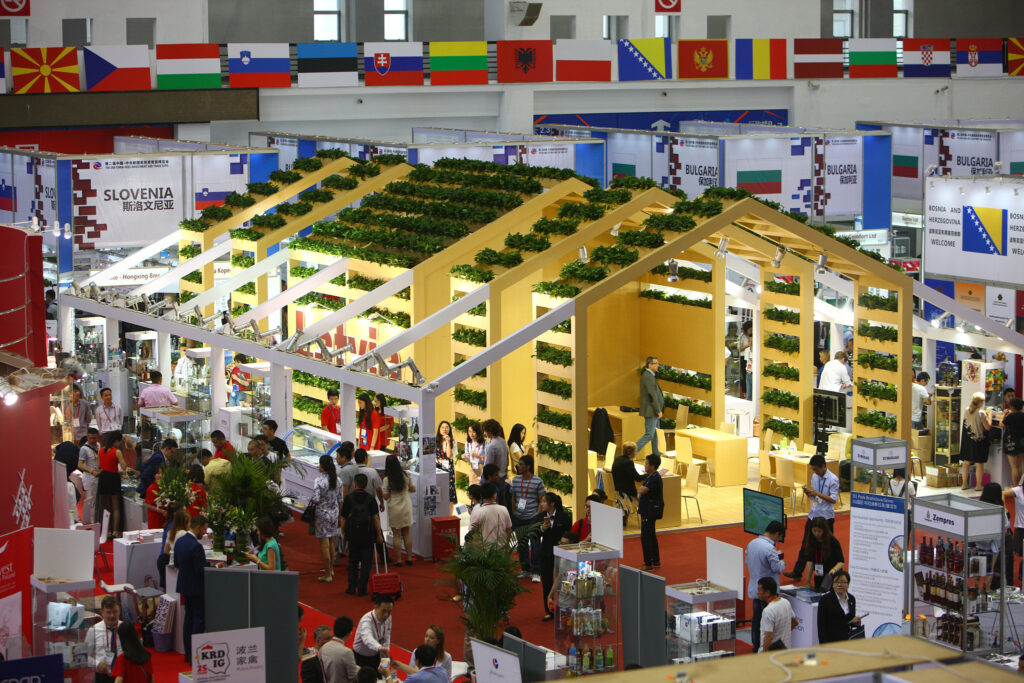
The project named ‘New Silk Road’, carries on its Itineraries over 60 countries in Asia, Europe and Africa. About 1000 milliard dollars will be invested in the construction of roads, ports and power plants. The project is financed by a special fund created exclusively by the Chinese government and the Asian Infrastructure and Investment Bank, a multilateral development bank, created at the initiative of China and which currently has 61 member countries.
Being in a very favorable geographical position, on the shores of the Adriatic and Ionian seas, the “One Belt, One Road” project and the cooperation mechanism between China and the countries of Central and Eastern Europe sees Albania as a country with great investment potential, especially in the use of the port sector along the Maritime Silk Road in the Mediterranean area.
In 2017, China and Albania signed the cooperation document for the joint construction of “One Belt, One Road” expanding cooperation in the fields of economic-commercial, cultural, educational, health, policy research institutes, cooperation between local governments, human resources, etc.
This cooperation document is also reflected in Chinese investments in Albania, which have reached approximately 900 million dollars, as well as in the number of Chinese tourists who have visited Albania. So last year, 20 thousand Chinese tourists visited Albania, with an annual increase of 60%, showing great business potential.
Referring to the data, in 2018, the trade volume between China and Central and Eastern European countries has reached 82.2 billion US dollars, with the growth of 21%. While international direct investments were declining, China’s investment in 16 Central and Eastern European countries increased by 67%. Here we can refer to projects such as the Hungary-Serbia railway, the Pelješač bridge in Croatia, the Smederevo steel plant in Serbia, the north-south highway in Montenegro, the highway in North Macedonia, etc.
Also, more than 6000 new trains of ChinaRailway Express are becoming an important node of the connection between the Asian world and Europe and specifically the countries of Central and Eastern Europe. Likewise, the number of Chinese tourists in Central and Eastern European countries has exceeded 1.4 million, while the number of tourists coming from Central and Eastern European countries to China has exceeded 350 thousand.
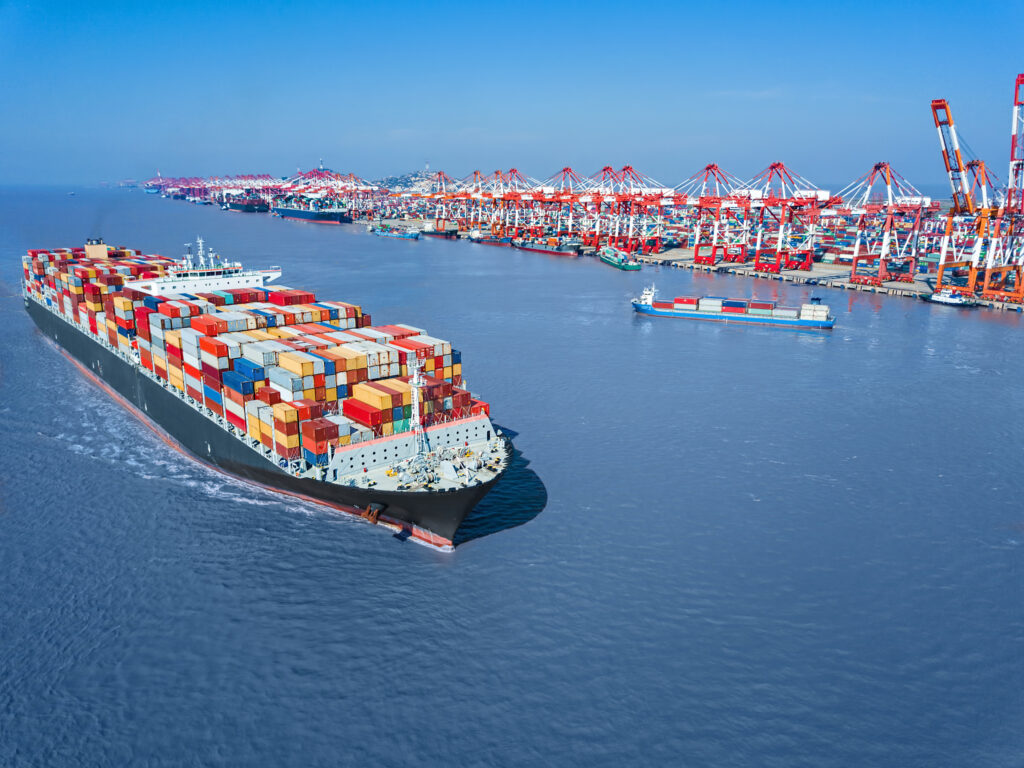
As for the connecting infrastructure with Europe, the Chinese strategy, ‘One Belt, One Road’ is about 4 corridors to connect China with Europe:
– The Northern Land Corridor starts from Beijing through Mongolia, Siberia and reaches Moscow, Helsinki, Berlin and ends in Rotterdam;
– The Central Land Corridor starts from Shanghai, passes through China and the former Soviet republics of Central Asia, Iran, Turkey and from Istanbul enters the Balkans to end in Duisburg, Paris and London;
– The Southern Land Corridor starts from Guangzhou (Southern China) and ends at Kwadar port on the southern Pakistan-Iran border.
– The Maritime Corridor envisages China’s maritime connection with India, Africa and with access to Europe from the port of Piraeus in Greece.
Meanwhile, it should be noted that according to the latest study of the World Bank, cooperation on “One Belt, One Road” has reduced the global trade cost by 1.1-2.2% and raised the global economic growth by at least 0.1% in 2019 .
China’s economy had a stronger-than-expected start of the year
Experts estimate that today China represents a world-class economy with clear goals. It is not a simple matter of the growth of the Gross Domestic Product (GDP) that expanded by 5.3% in the first three months of 2024, compared to a year ago, a figure that exceeded expectations. The main one is that China’s economic growth plays an important role in supporting the world economy. Investments in infrastructure in the countries included in the “One Belt, One Road” initiative, and at the same time its investments abroad, are contributing to world economic growth. Many international institutions estimate that China will contribute more than 30% to global economic growth this year, becoming the biggest driving force of the world economy. While advanced manufacturing and modern service industries, such as new energy, digital economy, artificial intelligence, high-end manufacturing and health are the main areas that dominate Chinese investment in the world.

The expansion of the Chinese economy at very high rates is a very positive factor for Europe as well.
Today, China ranks as the EU’s most important trading partner, and President Xi’s European tour is expected to positively re-dimension the EU’s economic-commercial cooperation with China.
During the last decade, China’s trade volume growth rate with the countries of Southeast Europe is over 8% per year. Likewise, in the first quarter of this year, the volume of trade between China and 17 Central and Eastern European countries (some of which are part of the EU) has increased by 50.2% compared to the same period of a year before.
China has become the EU’s main trading partner over the past year and this trend continues. EU imports from China increased by around 5.6%, while exports by 2.2%.
China’s growth, despite the challenges, is consolidated and has a strong base. This growth is being integrated into the economies of European countries, which have increased communication with China.
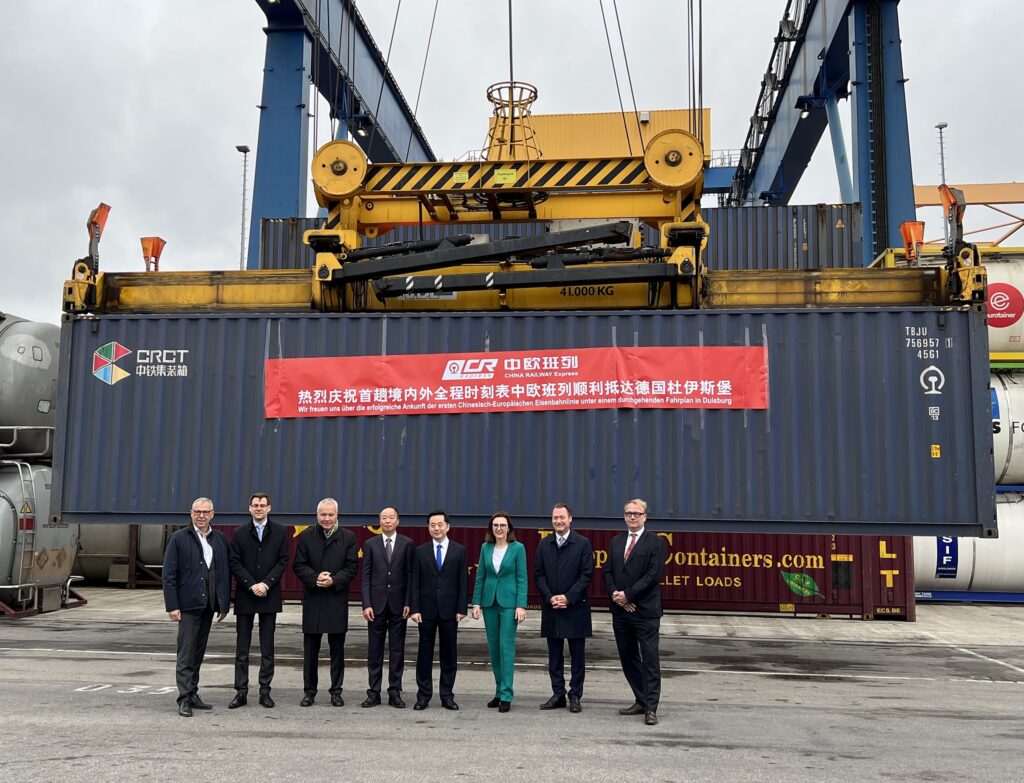
China’s railway lines with countries inside and outside the EU led to an increased communication flow with positive impact on the respective economies.
The willingness of Chinese enterprises to increase investment and trade cooperation is an opportunity that gives China-EU ties the power to develop. They have the opportunity to increase cooperation and economic and commercial partnership, injecting new potential into the recovery of the world economy, but also increase the impact on the development of the low-carbon economy and digital technology. The fields are wider than that and the opportunities more numerous despite the challenges.
© 2024 Argumentum






